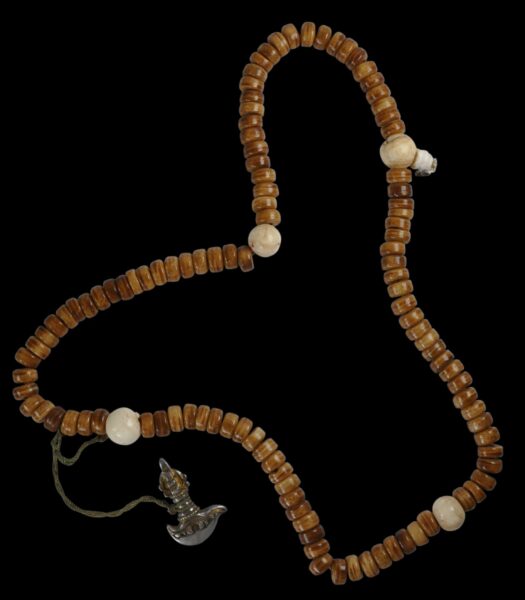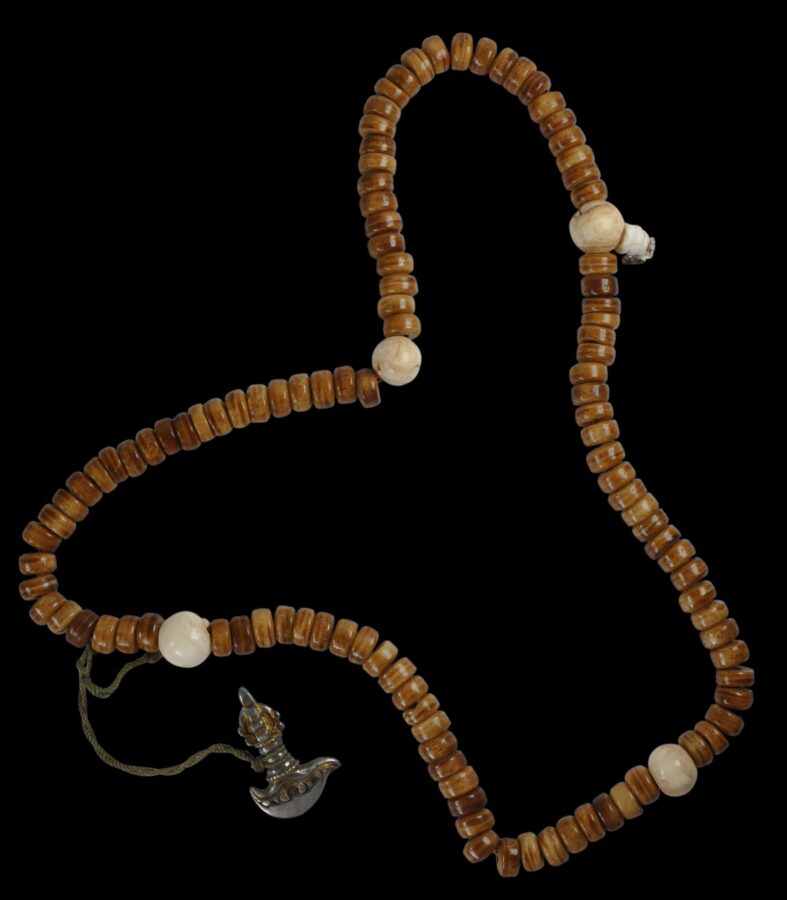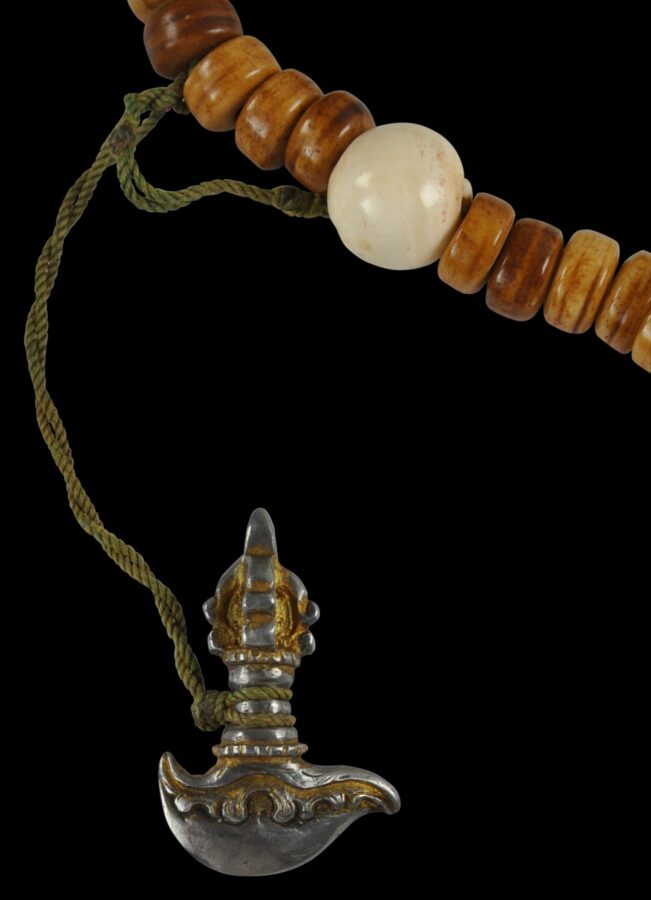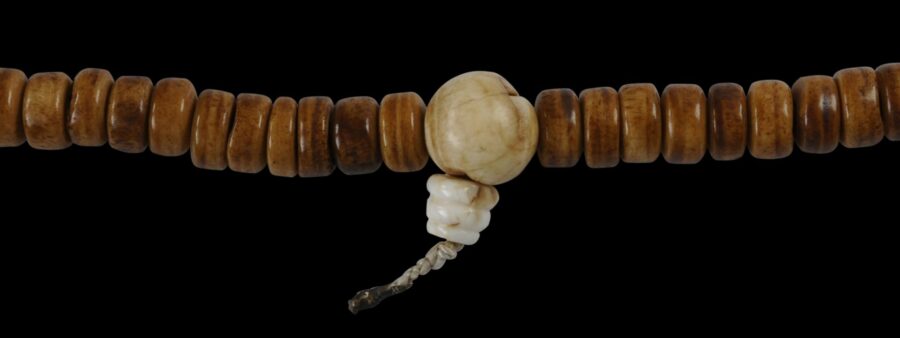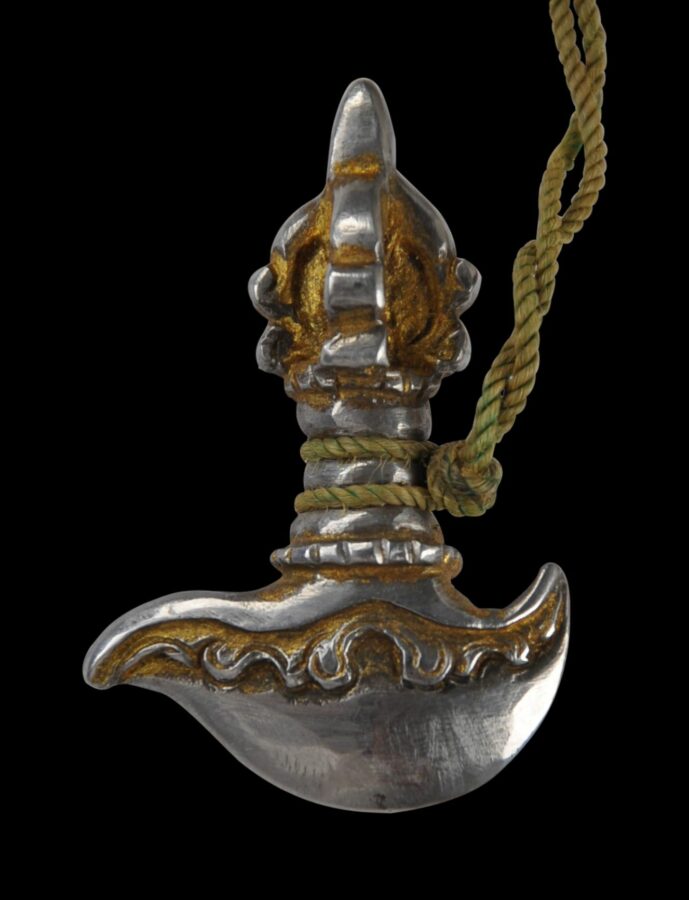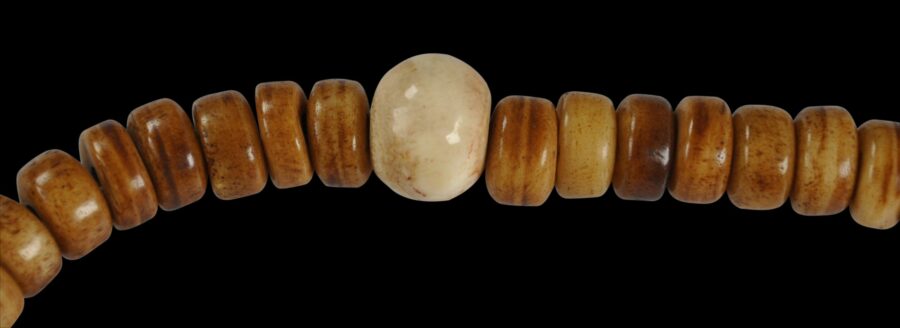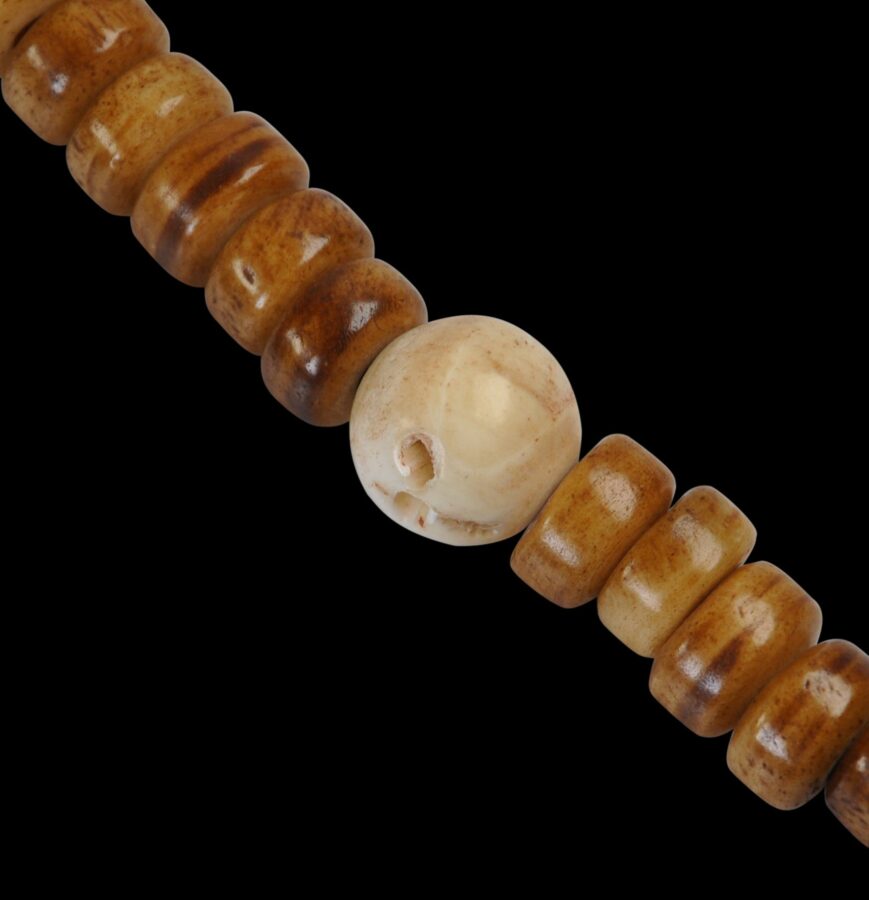This Tibetan Buddhist rosary (sin-‘phen) is composed of 108 fine bone beads, probably human bones. Tibetan rosary beads composed of human bone are rare and are known as Mi Mgo’i Phreng Ba. They were used for wrathful-deity rituals. Additionally, there are four chank shell beads, plus a tiered chank shell bead, and an attached marker cast from solid silver in the form of a vajra-topped ritual flaying knife.
Each element has superb patina from age and wear.
Buddhist rosaries evolved from ancient Hindu-Indian mala prayer beads. In Tibet, they were used by both laymen and monks. The main prayer beads were used to count repetitions of prayers and the counters were used to record multiples of the main beads, so that thousands of repetitions could be counted. Users typically held them in their left hands whilst chanting.
The set here is in a fine, stable condition. Each bone bead has a wonderful, honeyed patina.
References
Daalder, T., Ethnic Jewellery and Adornment: Australia, Oceania, Asia, Africa, Ethnic Art Press/Macmillan, 2009.
Henss, M., Buddhist Ritual Art of Tibet: A Handbook on Ceremonial Objects and Ritual Furnishings in the Tibetan Temple, Arnoldsche, 2020.
Reynolds, V., Tibet: A Lost World: The Newark Museum Collection of Tibetan Art and Ethnology, The American Federation of Arts, 1978.
Sherr Dubin, L., The Worldwide History of Beads, Thames & Hudson, 2009.


